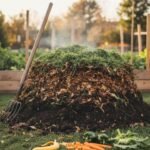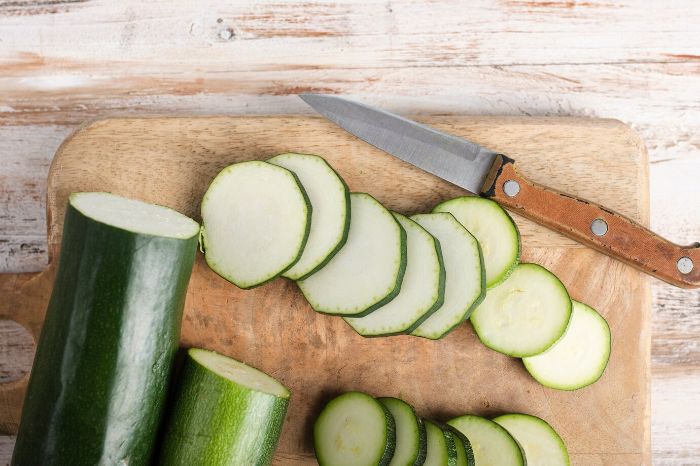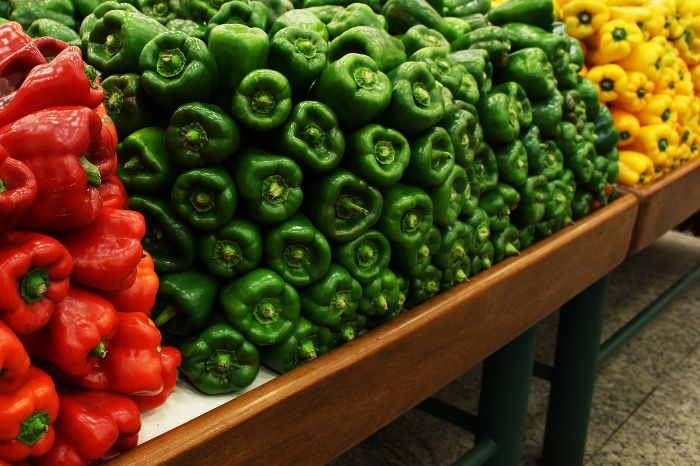Did you know that a single beet seed can produce a plant with multiple edible bulbs? Yes, that’s right! Beet plants have the remarkable ability to grow clusters of nutritious and vibrant roots that are not only delicious but also packed with vitamins and minerals. Understanding the timeline of beet plant growth is essential for successfully cultivating these colorful and versatile vegetables in your garden. From the initial seedling stage to the final harvest, each phase has its own requirements and milestones. In this article, we will guide you through the different stages of beet plant growth, providing tips and insights to help you grow a healthy and bountiful beet crop from seed to table.
Key Takeaways:
- Beet plants can produce multiple edible bulbs from a single seed.
- Understanding the timeline of beet plant growth is crucial for successful cultivation.
- From seedling to harvest, each stage of beet plant growth has its own requirements and milestones.
- Proper care and attention throughout the growth journey can result in a healthy and bountiful beet crop.
- Stay tuned for the upcoming sections of this article, where we will delve deeper into the different phases of beet plant growth.
Table of Contents
Germination – The First Phase of Beet Growth
Germination is the first phase of beet plant growth. This is when the beet seeds sprout and develop into seedlings. During this stage, providing the optimal conditions for germination is essential. The temperature, moisture, and soil quality play a crucial role in the successful germination of beet seeds. Understanding the ideal conditions and knowing what to expect during the germination period will set the foundation for healthy beet growth.
Optimal Conditions for Beet Seed Germination
To ensure successful beet seed germination, it is important to create the right environment. The optimal temperature for beet germination is between 55°F (13°C) and 75°F (24°C). This moderate temperature range promotes faster and more uniform germination. Additionally, maintaining consistent moisture levels is crucial. The soil should be consistently moist, not soggy or dry. Avoid overwatering, as it can cause the seeds to rot.
What to Expect During the Germination Period
During the germination period, you can expect to see the beet seeds sprouting and developing into small seedlings. The seedlings will initially have two tiny cotyledon leaves, which are the first leaves to emerge. These leaves will provide initial energy until the true leaves start to grow. The germination period typically lasts for 7 to 14 days, depending on the temperature and growing conditions.
Seedling and Early Growth Stages
Once the beet seeds have germinated, they enter the seedling and early growth stages. This is an exciting period where the tiny beet seedlings start to emerge from the soil and begin their journey towards maturity. During this stage, it is crucial to provide the necessary care and attention to ensure the healthy development of these young plants.
To care for young beet plants, you must pay attention to their water needs. Adequate watering is crucial during the early stages to promote strong root growth and leaf development. Be mindful not to overwater, as excessive moisture can lead to rotting or disease. It’s also important to maintain a consistent watering schedule, ensuring the soil remains evenly moist but not waterlogged.
Feeding your young beet plants with a balanced fertilizer can help provide the necessary nutrients for optimal growth. Look for a fertilizer specifically formulated for young plants and follow the recommended dosage instructions. Regular fertilization will support healthy foliage growth and overall plant vigor.
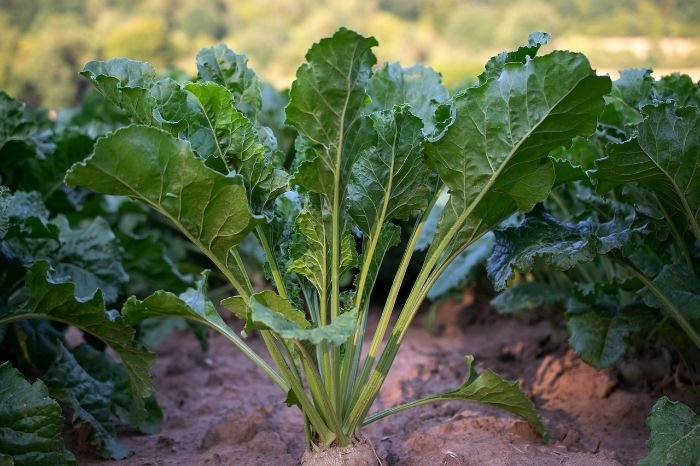
Protecting young beet plants from pests and diseases is essential for their survival and continued growth. Keep an eye out for common pests like aphids, slugs, and beetles, and take appropriate measures to control them. Applying organic pest control methods or using natural deterrents can help ensure the well-being of your beet seedlings.
Throughout the early growth stages, there are key milestones that signify the progress and readiness of the beet plants for the next phases of growth. These milestones include the emergence of true leaves, the development of a well-established root system, and the growth of the first set of beet leaves. Monitoring these milestones allows you to gauge the health and progress of your young beet plants and make any necessary adjustments to their care.
By providing proper care, including adequate watering, fertilization, and protection, you can ensure that your beet seedlings thrive during their early growth stages. Stay attuned to their needs, and your young beet plants will reward you with continued growth and development.
Leaf Development – Expanding Above Ground
As beet plants continue to grow, their leaves expand above ground. Leaf development is a crucial phase for the overall health and vigor of the beet plant. Adequate leaf development ensures that the plant can photosynthesize efficiently, producing energy for growth and reproduction.
To support healthy leaf development, beet plants require specific nutrients. Nitrogen, phosphorus, and potassium are key elements that contribute to robust leaf growth. Nitrogen promotes lush, green foliage, while phosphorus aids in energy transfer and root development. Potassium strengthens the plant’s overall structure and enhances disease resistance.
Ensuring that beet plants receive a balanced fertilizer with these essential nutrients is essential for maintaining healthy leaf development. Consult the product labels or seek advice from local gardening experts to determine the appropriate fertilization schedule and proper application rates.
Common Issues and How to Address Them
Despite proper care, beet leaves can encounter some common issues that hinder their growth. Nutrient deficiencies, such as nitrogen or iron deficiency, can cause yellowing or stunted growth of the leaves. In such cases, supplementing with appropriate fertilizers or amendments can rectify the deficiencies.
Pests, including aphids, flea beetles, and leaf miners, can also damage beet leaves. Regularly inspecting the plants and using organic pest control methods, such as introducing beneficial insects or applying neem oil, can help manage infestations effectively.
Diseases, such as powdery mildew or leaf spot, may affect beet leaves. Proper planting spacing, promoting good air circulation, and avoiding overhead watering can help prevent these diseases. If necessary, apply organic fungicides or remove severely infected leaves to limit the spread.
By addressing these common issues promptly, gardeners can ensure that their beet plants maintain healthy leaf development, resulting in robust and productive plants.
Root Development and Bulb Formation
Factors Influencing Root Growth
Root development and bulb formation are critical stages in the growth of beet plants. The roots anchor the plant and absorb nutrients from the soil, while the bulb stores energy for the future growth and production of the plant.
Several factors can influence root growth in beet plants. The quality of the soil plays a vital role in providing the right conditions for root development. It should be well-draining, loose, and rich in organic matter. Additionally, maintaining the pH levels within the optimal range of 6.0 to 7.0 is crucial for healthy root growth.
Another factor that affects root growth is moisture. Beet plants require consistent moisture throughout their growth cycle to encourage root development. Regular watering, ensuring the soil is evenly moist but not waterlogged, is essential for robust root formation.
Temperature is also a factor that influences root growth in beet plants. Cooler temperatures in the range of 50°F to 70°F (10°C to 21°C) are ideal for root development. Extreme heat can adversely affect root growth, so providing shade or using mulch to keep the soil cool during hot weather can be beneficial.
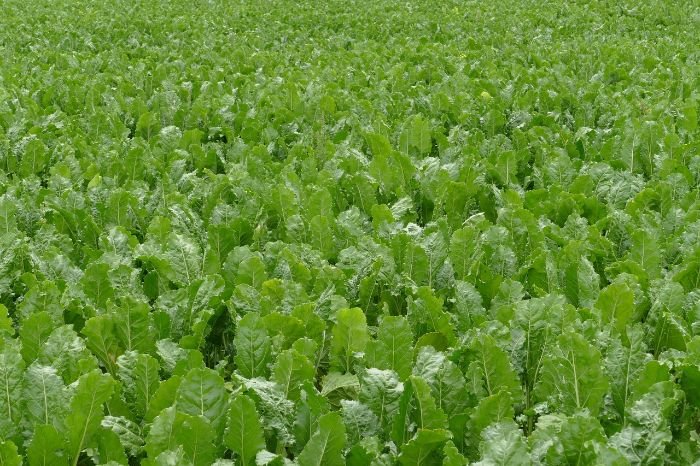
Tips for Encouraging Robust Beet Roots
To promote robust root development in beet plants, consider the following tips:
- Space the beet plants adequately to allow room for root expansion. Beets should be planted at least 2 to 4 inches (5 to 10 cm) apart in rows with 12 to 18 inches (30 to 45 cm) spacing between rows. Crowded plants can lead to stunted or misshapen roots.
- Provide consistent watering to ensure the soil remains evenly moist. Avoid overwatering, as it can lead to rot and fungal diseases. Regularly check the moisture level of the soil and adjust watering accordingly.
- Apply a balanced fertilizer to provide essential nutrients for root development. Look for fertilizers with equal ratios of nitrogen (N), phosphorus (P), and potassium (K). Follow the manufacturer’s instructions for application rates.
- Monitor and manage pests and diseases that can affect root growth. Regularly inspect the plants for signs of pests such as aphids or diseases such as root rot. Take appropriate measures, such as using organic pest control methods or applying fungicides, to protect the roots.
- Harvest beets at the right time to ensure optimal root quality. Mature beets have a firm texture and a diameter of 1.5 to 3 inches (4 to 8 cm). Harvesting too early or too late can result in underdeveloped or woody roots.
By implementing these tips, you can encourage the development of robust beet roots, setting the stage for a successful harvest and a delicious addition to your culinary creations.
Maturation and Harvest – Timing Is Everything
Maturation and harvest are the final stages of beet plant growth. Timing is everything when it comes to harvesting beets for optimal flavor and texture. Understanding the signs that beets are ready for harvest, such as root size and texture, as well as the proper techniques for harvesting, can ensure the best outcome. Whether you prefer small and tender beets or larger bulbs, knowing when and how to harvest will result in a satisfying beet crop.
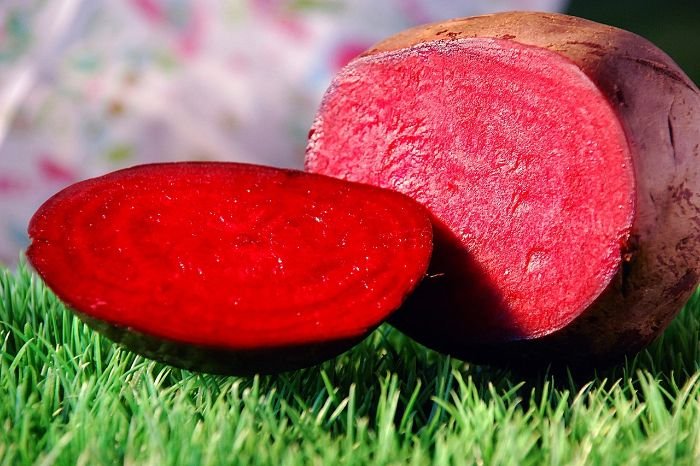
Signs That Beets Are Ready for Harvest
Harvesting beets at the right time is crucial for achieving the desired taste and quality. There are several signs that indicate beets are ready for harvest:
- The roots have reached the desired size. Depending on the beet variety, the roots should be around 1-3 inches in diameter.
- The skin of the beets is smooth and firm.
- The foliage starts to yellow and wither.
- When gently pulling on the foliage, the beets come out of the ground easily.
By observing these signs, you can ensure that the beets have reached their peak readiness for harvesting.
Harvesting Techniques for the Best Outcome
Proper harvesting techniques are essential to preserve the quality and flavor of the beets. Here are some harvesting tips to achieve the best outcome:
- Use a garden fork or spade to carefully loosen the soil around the beets.
- Lift the beets out of the ground, being gentle to avoid damaging the roots.
- Trim the leaves from the beets, leaving about an inch of the stem intact.
- Rinse the beets with water to remove any dirt or debris.
- Store the harvested beets in a cool and dark place to maintain their freshness.
Following these techniques will help you maximize the flavor and quality of your harvested beets.
Conclusion
In conclusion, understanding the timeline of beet plant growth is crucial for successful cultivation. From germination to harvest, each stage of the beet plant’s growth has its own specific requirements and milestones. By providing optimal conditions for germination, caring for young plants, promoting leaf and root development, and knowing when to harvest, you can ensure the growth of a healthy and bountiful beet crop in your garden.
Throughout the growth journey of your beet plants, it’s important to remain attentive to their needs. Providing the right amount of moisture, nutrients, and protection from pests and diseases will contribute to their overall well-being and productivity. Keeping a close eye on the plants and addressing any issues promptly will help you achieve the best results.
Remember that timing is everything when it comes to harvesting beets. Properly evaluating the signs of readiness, such as root size and texture, will ensure that you harvest your beets at their peak flavor and texture. By following the recommended harvesting techniques, you can enjoy the satisfaction of a successful beet crop.
In summary, by understanding the timeline of beet plant growth and implementing appropriate practices at each stage, you can cultivate a thriving beet crop. Paying attention to the needs of your beet plants throughout their growth journey will lead to a rewarding gardening experience and a delicious harvest.
FAQ
What are the different stages of beet plant growth?
The different stages of beet plant growth include germination, seedling and early growth stages, leaf development, root development and bulb formation, and maturation and harvest.
What are the optimal conditions for beet seed germination?
The optimal conditions for beet seed germination include maintaining the right temperature, moisture, and soil quality.
What are the key milestones in the early development of beet plants?
Key milestones in the early development of beet plants include the development of leaves and the establishment of root systems.
What are the nutritional needs for healthy leaf development in beet plants?
Providing the right nutrients, such as nitrogen, phosphorus, and potassium, is crucial for promoting healthy leaf growth in beet plants.
How can I address common issues with beet leaves?
Addressing common issues with beet leaves involves identifying the problem and implementing appropriate solutions, such as providing the necessary nutrients or applying pest control measures.
How do I know when beets are ready for harvest?
Beets are ready for harvest when they reach the desired size and have the appropriate texture.
What are the techniques for harvesting beets?
Techniques for harvesting beets include gently loosening the soil around the roots and carefully pulling them out of the ground.
